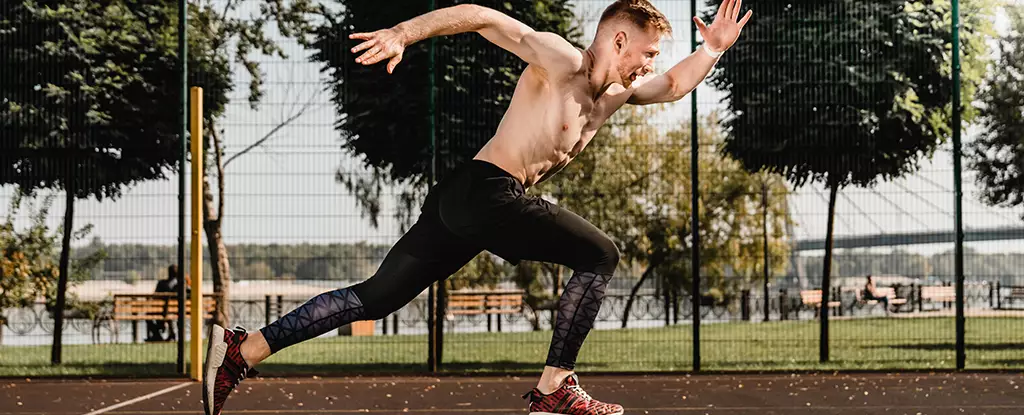For fitness enthusiasts and professional athletes, the pursuit of physical excellence often reaches its apex through intensively rigorous training. However, an intriguing 2023 study, involving over 4,700 post-exercise fluid samples from firefighters, raises some alarm bells regarding the impact of excessive exercise on immune health. Current findings indicate that while moderate physical activity is generally beneficial, extreme exercise may have the contrary effect, potentially dampening the body’s ability to fend off infections.
Ernesto Nakayasu, a biomedical scientist at the Pacific Northwest National Laboratory (PNNL), posits that highly-trained individuals may become more susceptible to viral respiratory infections following periods of vigorous exertion. This raises significant concerns for professions that demand both high fitness levels and operational readiness, such as emergency service workers and elite athletes. The relationship between high-intensity workouts and immune resilience remains a complex and somewhat controversial topic within the field of exercise science.
The existing body of research presents a dichotomy between the advantages of regular, moderate exercise and the potential risks associated with extreme physical activity. Although there is a well-documented correlation between moderate exercise and prolonged immune system enhancement, the immediate aftermath of intense workouts is less understood. Some studies have indicated that athletes frequently experience upper respiratory infections post-training; however, distinguishing whether this indicates a direct cause-and-effect relationship remains elusive.
To investigate these dynamics, Nakayasu and his team conducted a thorough analysis of bodily fluids, including blood plasma, urine, and saliva, from 11 firefighters engaged in a strenuous 45-minute workout. Their multi-faceted approach aimed to uncover the biological changes taking place during extreme physical exertion, particularly early signs of immune system strain. Kristin Burnum-Johnson, a bioanalytical chemist at PNNL, articulated a compelling aim: to enhance the safety protocols for individuals who regularly engage in high-demand physical labor, such as first responders and military personnel.
The findings from the analysis unveiled potential markers of immune suppression among the firefighters, aligning with the team’s initial hypothesis. Alongside fluctuations in expected physiological responses, such as increased vascular fluid dynamics and oxygen transport, there was a noteworthy decline in pro-inflammatory molecules. This led researchers to speculate that the observed changes might represent adaptive mechanisms designed to enhance oxygen delivery during strenuous activities.
Interestingly, the study identified an increase in opiorphin, a molecule that facilitates vascular dilation. Researchers hypothesize that opiorphin serves to augment blood flow to muscles in the face of escalating physical demands. This observation prompts strategic questions about whether this adaptive response might inadvertently compromise immune defenses.
In addition to systemic changes, the study noted alterations in the participants’ oral microbiome, potentially linked to a rise in antimicrobial peptides following vigorous exercise. These peptides are thought to act as a line of defense against pathogens in the mouth. However, Nakayasu and colleagues noted that these antimicrobial agents failed to inhibit Escherichia coli growth, hinting at limitations in protective capabilities that may arise due to intense exercise.
Despite these findings, alternatives exist that challenge the view of immune suppression. Some experts suggest that such physiological changes may symbolize a heightened state of immune regulation rather than outright suppression. This underscores the need for additional research to reconcile contradictory viewpoints and to expand beyond the narrow sample of healthy male firefighters included in the study.
The relationship between exercise, particularly of high intensity, and immune function continues to warrant closer scrutiny. While the new study adds valuable insights, it also highlights the necessity for a broader investigation that incorporates diverse populations. The well-being of high-performance athletes and those in physically demanding professions is of paramount importance, necessitating actionable strategies to ensure that their fitness regimens do not compromise their health.
As we venture into further research, the critical balance between reaping the benefits of exercise and safeguarding immune health must remain at the forefront of scientific inquiry. Understanding this relationship could provide vital information for optimizing training protocols while simultaneously mitigating health vulnerabilities, paving the way for a healthier and more resilient populace.


Leave a Reply